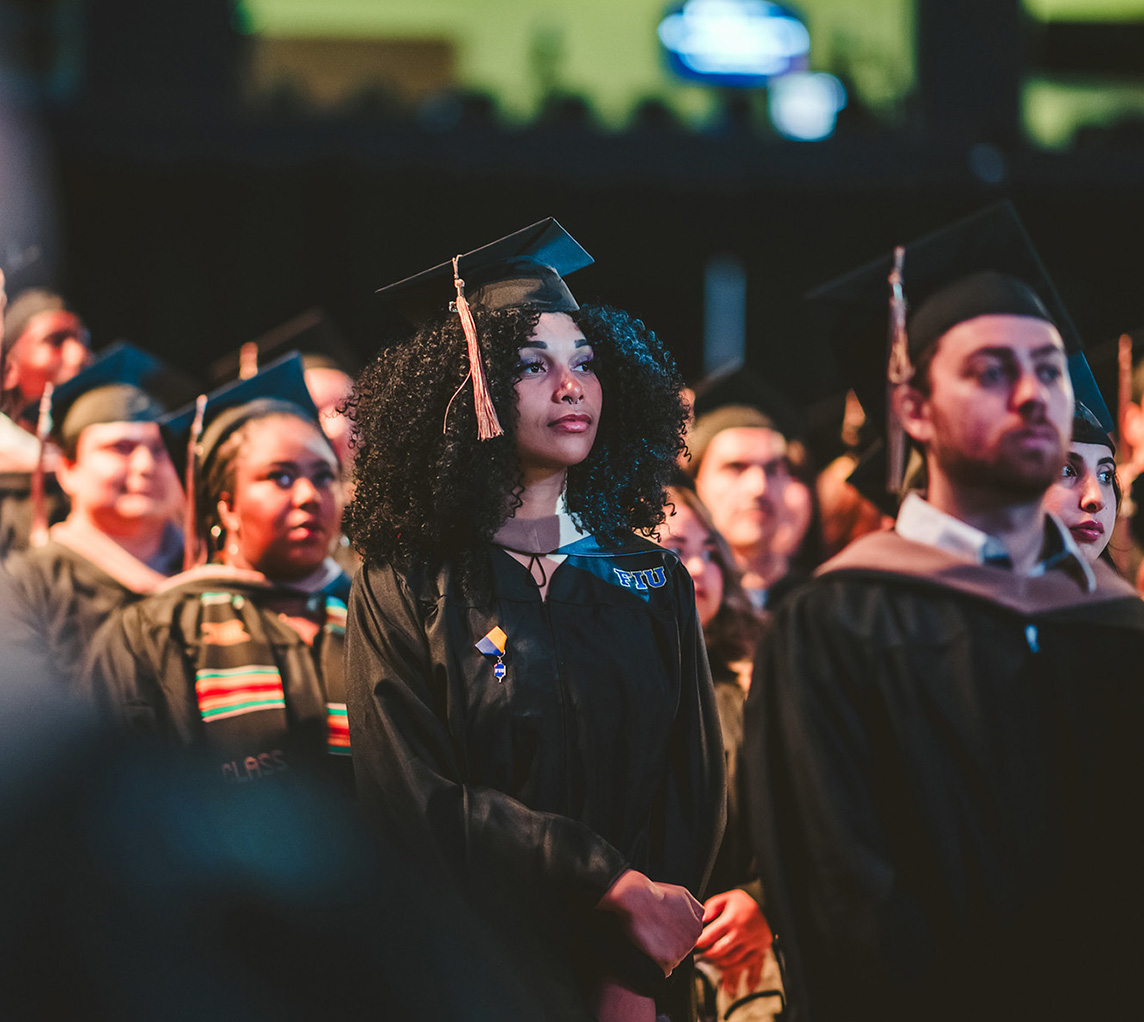Photography
Photography is an important part in curating the image of the university. It creates a sense of emotion and style that makes FIU unique from other institutions.
When selecting or shooting images for FIU’s brand, strive for feelings of accomplishment, approachability, confidence and energy while showing an authentic slice of life at the university.
People
- Photographs of people should show them honestly and realistically.
- Portraits should be straight on and expressive.
- Otherwise, people should be shown in action, doing things.
Places
- Photos of campus and other locations around Miami should be shown as expansive and optimistic and give viewers the chance to see possibility.
Best practices
- Professional photography should always be used in marketing and external communications when possible.
- Images should be free of digital noise, in focus, and have accurate colors.
- The highest resolution photo should be sourced whenever possible.
- All photographs should be printed at 300 dpi at the actual size.
- Do not increase the size of digital images as this can cause the image to be pixelated.
Examples




Videography
Video content created by and for FIU units should be consistent with the FIU brand: modern, energetic, vibrant and of high quality. These videos should reflect well on the FIU brand.
Poorly produced videos can negatively affect perceptions of FIU and add to "clutter" on FIU’s content platforms. Both editorial (message, story, etc.) and aesthetic (lighting, composition, etc.) aspects of the process should be considered during production and prior to distribution.
Videos should represent FIU in the following ways
- Messaging: Know your audience and craft interesting stories in a way that captures their attention from the start.
- Production value: Content should be filmed in HD or 4k resolutions. Footage should be in focus and stable. Subjects should be properly lit and audio quality should be free of distortion and well recorded.
- Editing: Video should not be longer than needed. Text should appear on screen long enough to read twice. Audio levels should be consistent throughout the video.
- Duration: Videos can vary from 10 seconds to 4 minutes long. Shorter is usually better.
- Music: All rights to music used should be purchased. A common site for music is audiojungle.net. Stock footage should be used sparingly and should match the look and feel of our university.